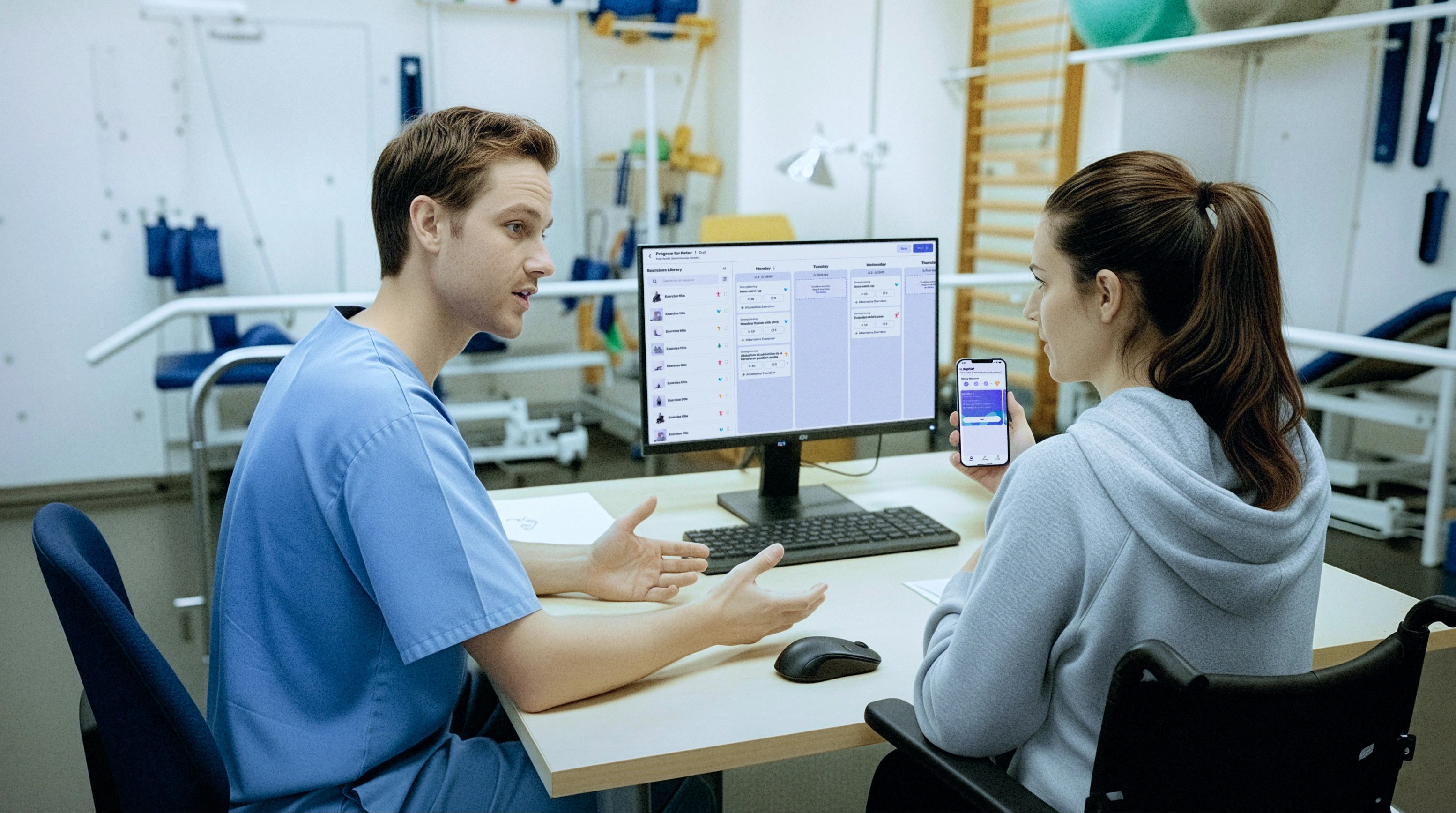I. Project definition
Prioritise the right problem
In late 2023, leadership demanded clarity while other teams pushed for ready-made solutions. I created a scoring framework that helped my team prioritise with confidence and shifted the focus back to problems.
Project scope
At the start of this project, I contributed on defining product outcomes while Product Managers, the UX Researcher, and the Head of Design defined the problem, goals, timeline, and user pain points.
🤔 The problem
"Patients often experience boredom and loss of motivation due to the repetitive nature of long-term exercise programs."
🎯 Business Goal
🚀 Outcomes
Physio.me should support Biogen's objective of enhancing its reputation and being recognised as an innovator by healthcare professionals.
- We want PTs to be more satisfied with Physio.me (NPS).
- We want PTs to create varied programs for patients so they feel more successful.
- We want Patients feel less bored doing their program so they complete more exercises.
II. Understand
Secondary research
After our skilled UX researcher clearly defined and documented the problem, I conducted secondary research to explore patient boredom in home-based physical therapy.
My approach included analysing and clustering:
- User feedback
- Current data
- Competitors’ apps and services.
- Scientific papers on the subject.
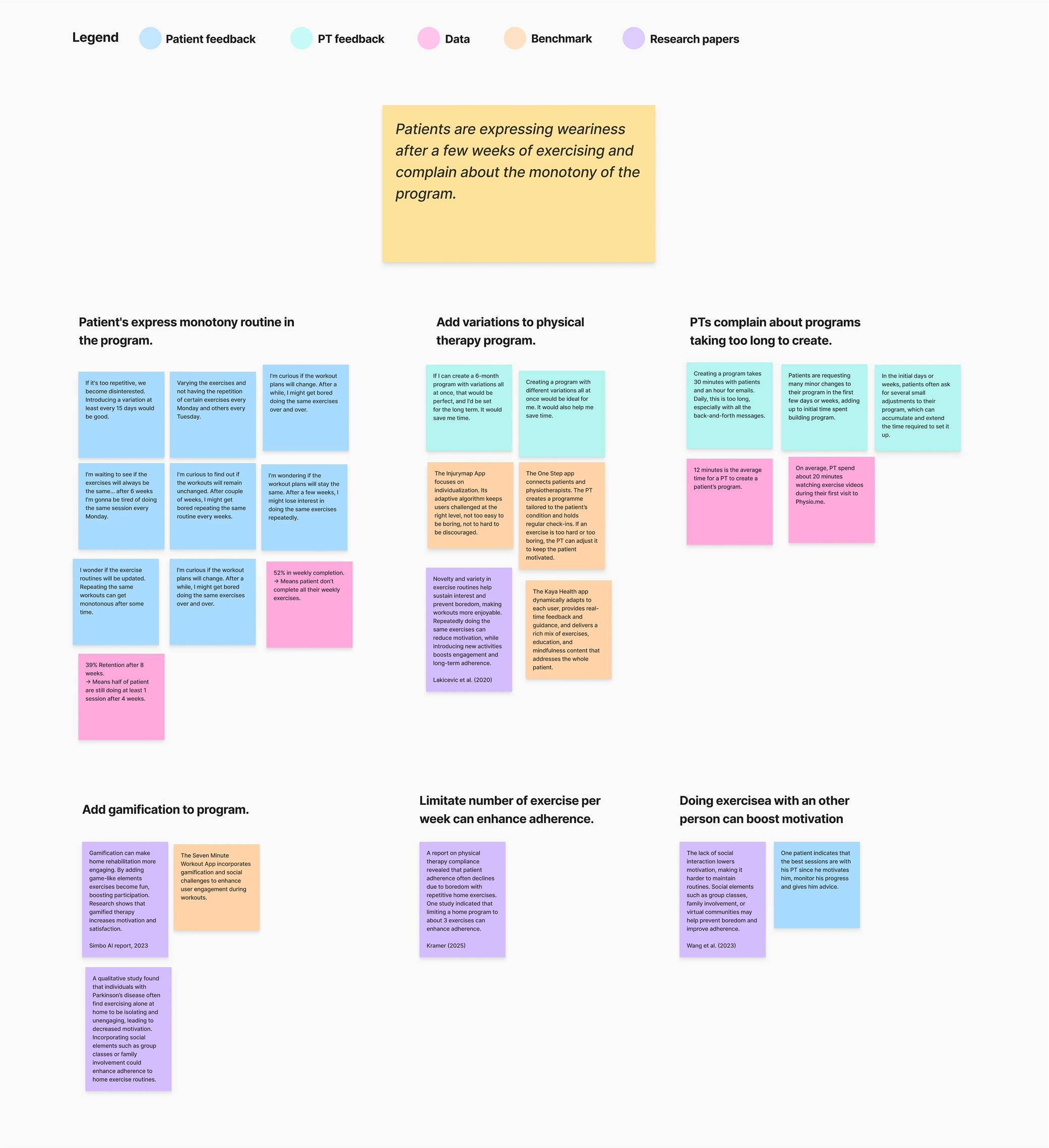
Key takeaways
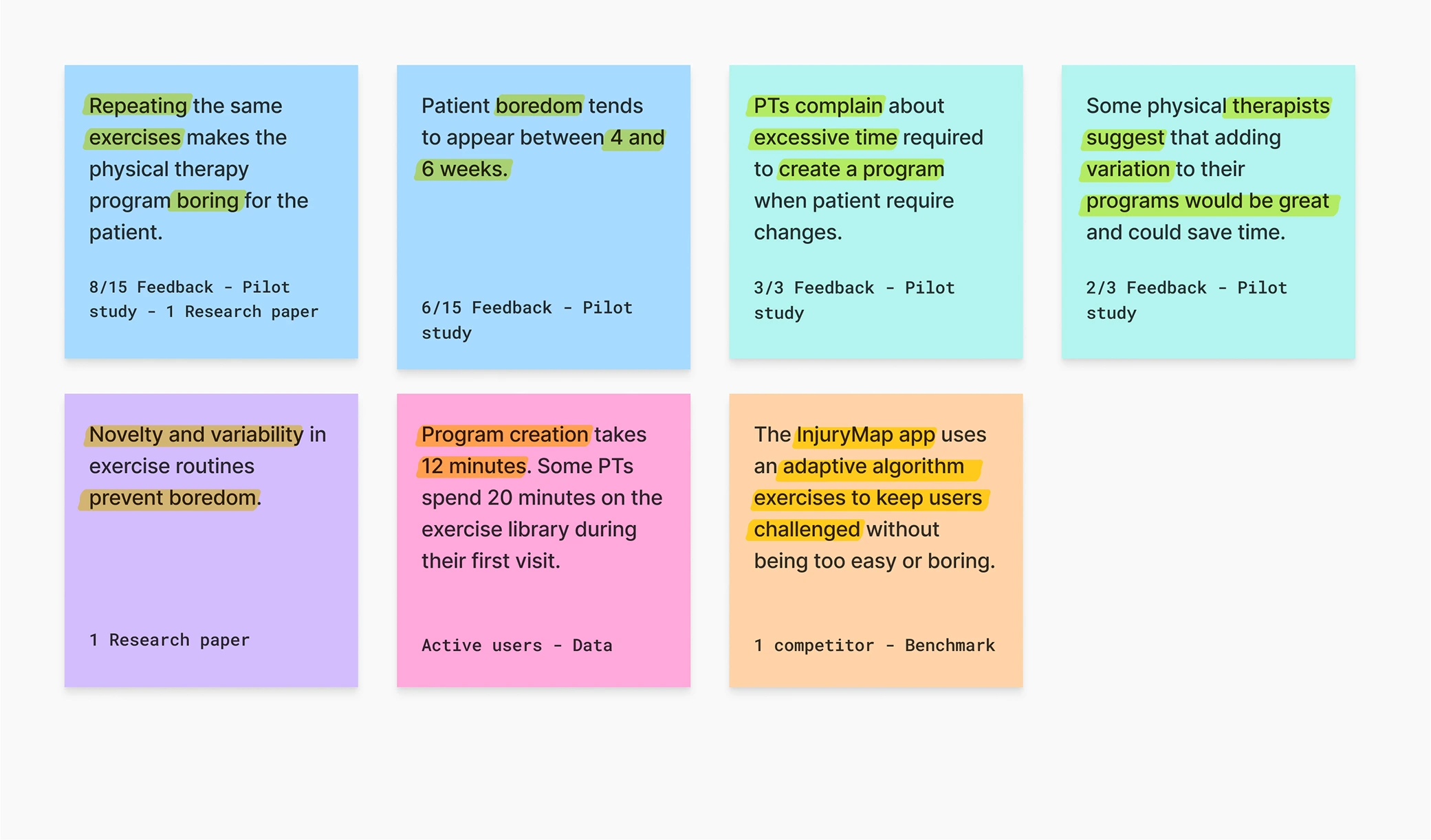
Framing the problem with nuances
To prepare our first workshop we gathered: User feedback, Personas, User journey, Key takeaways. After reviewing these materials together, we carefully framed the problem to capture its nuances.

Ideation workshops
Next we moved into ideation workshops. With several deliverables on my plate, the Head of Design led the facilitation, allowing me to stay focused. It was perfect teamwork.
Our final concept was a library of program templates, letting therapists schedule varied exercises over several weeks.
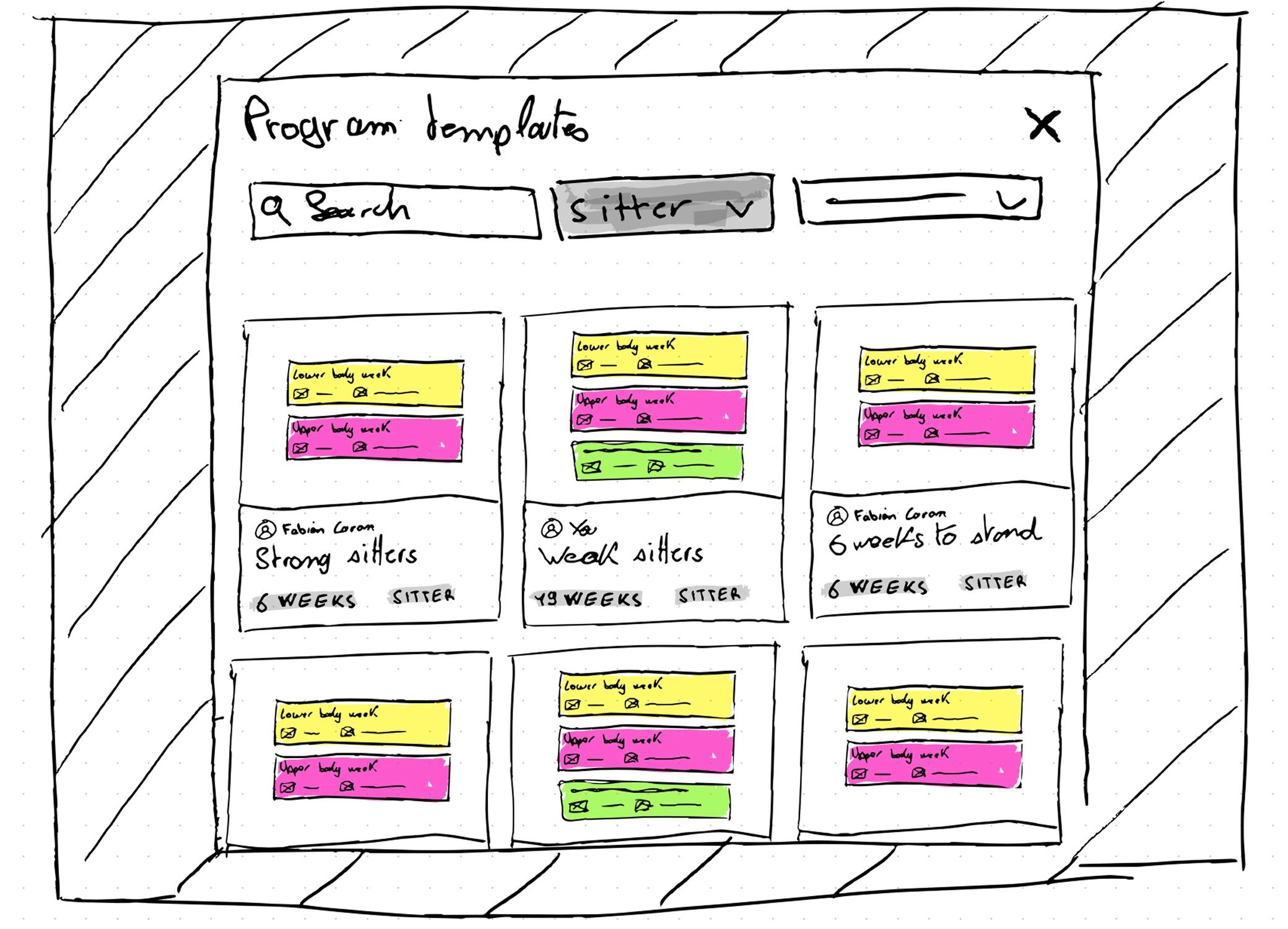
III. Test
Long-awaited user test
The user test validation took 3 months. Unfortunately, I guess UX design was a low priority and somewhat unfamiliar to the regulatory team.
Below the prototype of “Template for Therapist” idea:
A failed concept
Our idea failed to gain traction among physical therapists due to the following reasons:
✅ May add variety to the patient’s exercise program.
❌ Physical Therapists found the template too impersonal and rigid.
❌ Managing several weeks felt overwhelming for Therapists.
❌ Alternating weeks may disrupt the patient’s routine
The truth is, we had based our work on a suggestion from the very talented former design team. Confirmation bias can be tough, so we didn’t hesitate to throw our idea away and start fresh!
One last idea
During our final ideation workshop, we sketched the concept of alternative exercises with the idea to create the simplest interaction: therapists would introduce new exercises to substitute existing ones with minimal effort.
Patients would swap their exercises whenever they wished , introducing enough variety to prevent monotony while ensuring therapists maintained control.
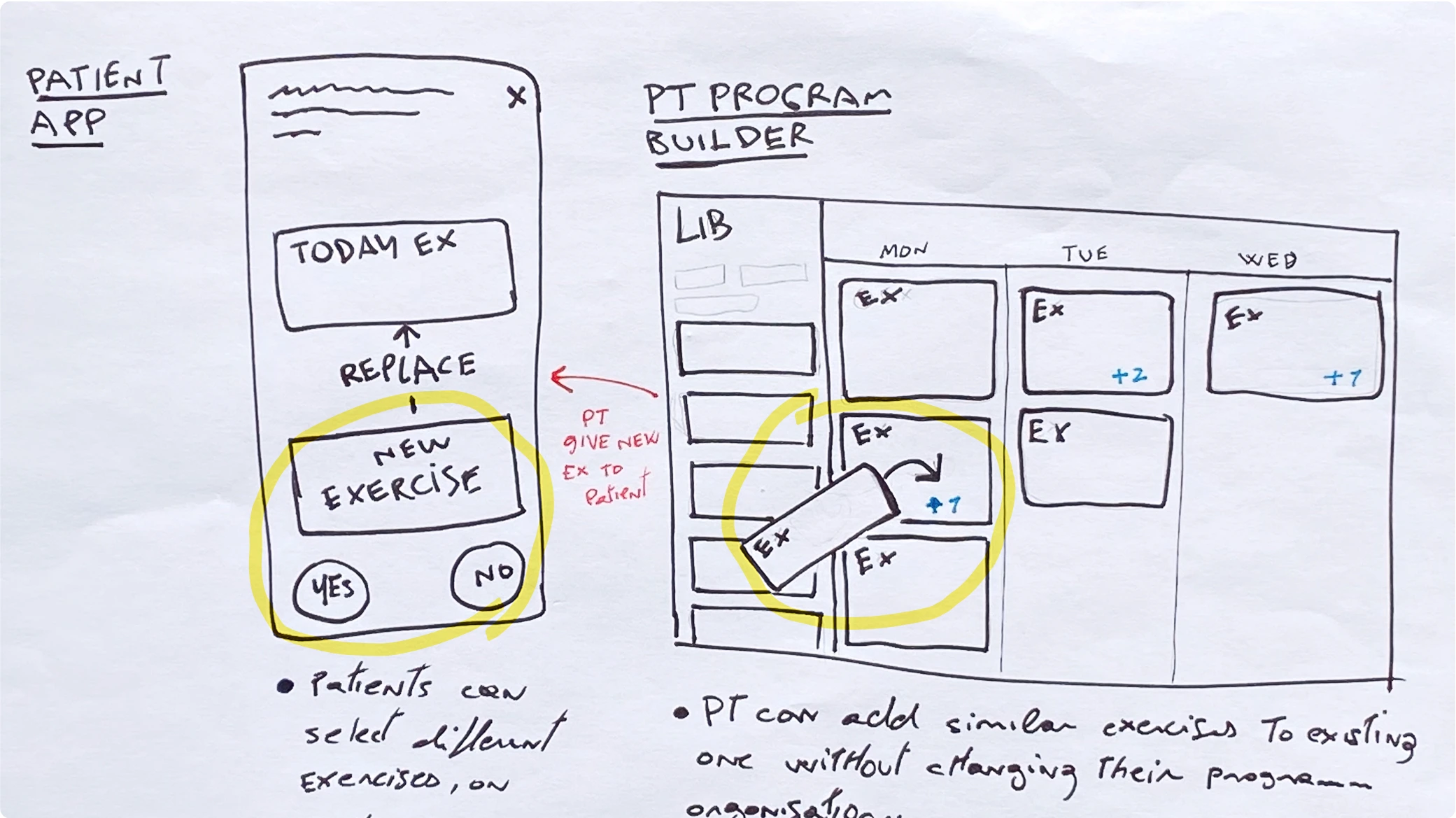
Early UI design concept
I experimented with the simplest user interaction for adding an alternative exercise in the PT program builder, while the other Senior Designer explored the best way to implement this feature in the Patient app.
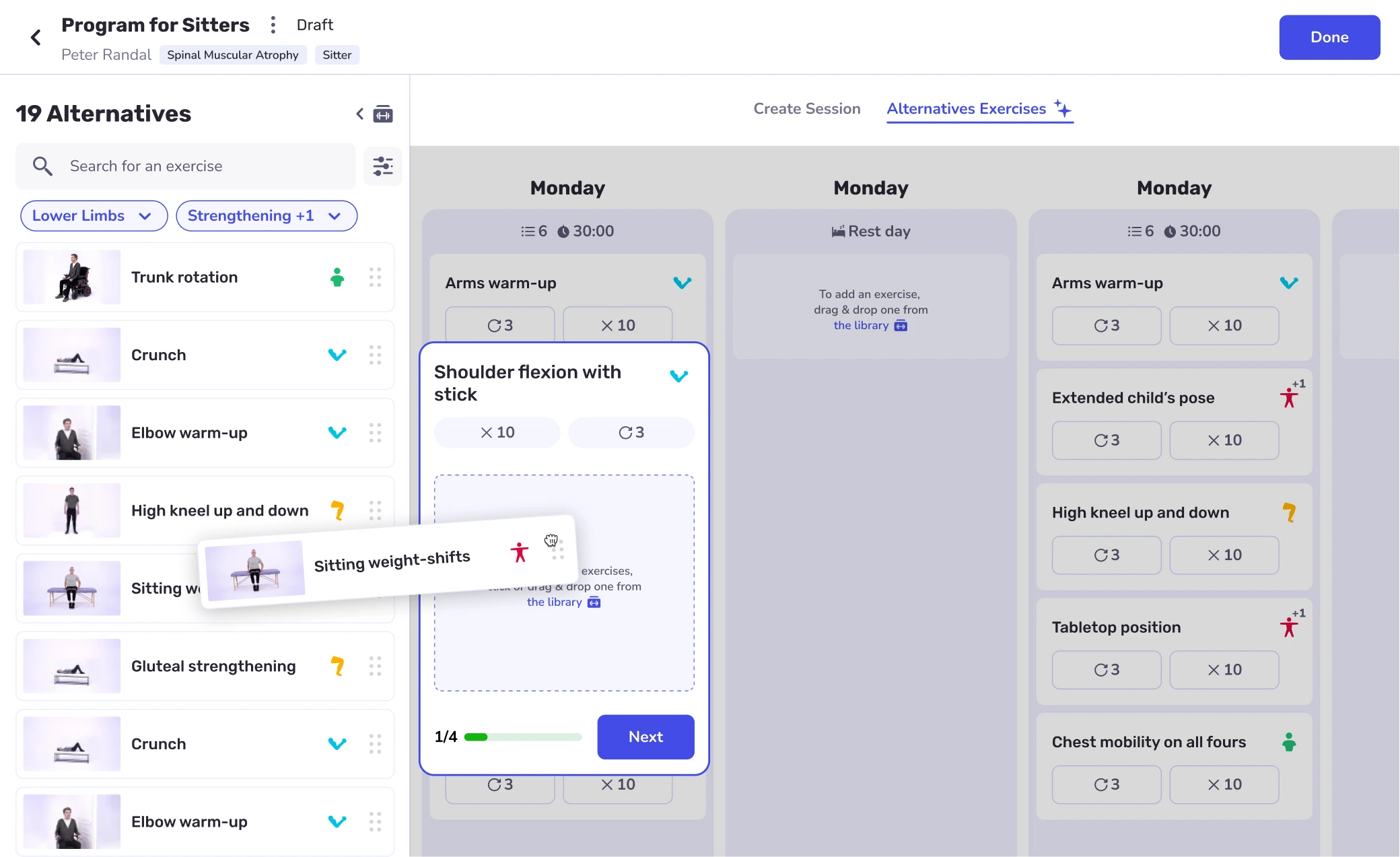
This alternative exercise idea seemed to hit the sweet spot! It would require minimal additional effort from therapists and would provide patients with new exercises to boost their motivation.
IV. Implementation
We encountered several challenges while designing this feature:
- Defining precise logic
- Regulatory lengthy approvals blocking patient user testing
- Avoiding classification as a medical device by the Biogen Scientific Review Committee (SRC).
Pick the right solution, avoid risks
With differing opinions within the team about how this feature should work, I organised a worst-case scenario workshop to identify the consequences and risks of our listed solutions.
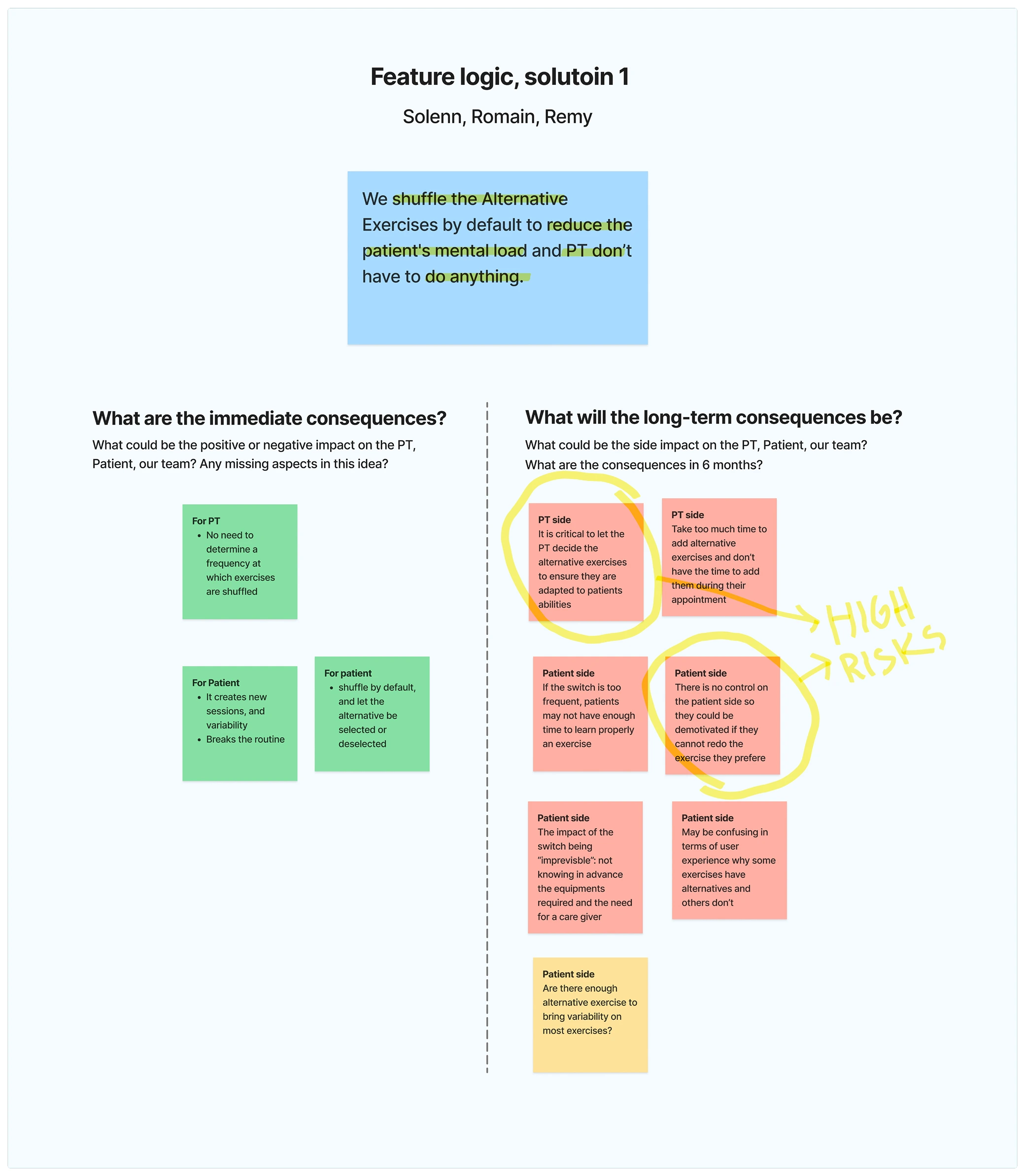
Validate the exact logic
I used a decision matrix to validate the feature logic , effectively resolving technical and UX complexities based on design principles and custom rules from our worst-case scenario workshop.
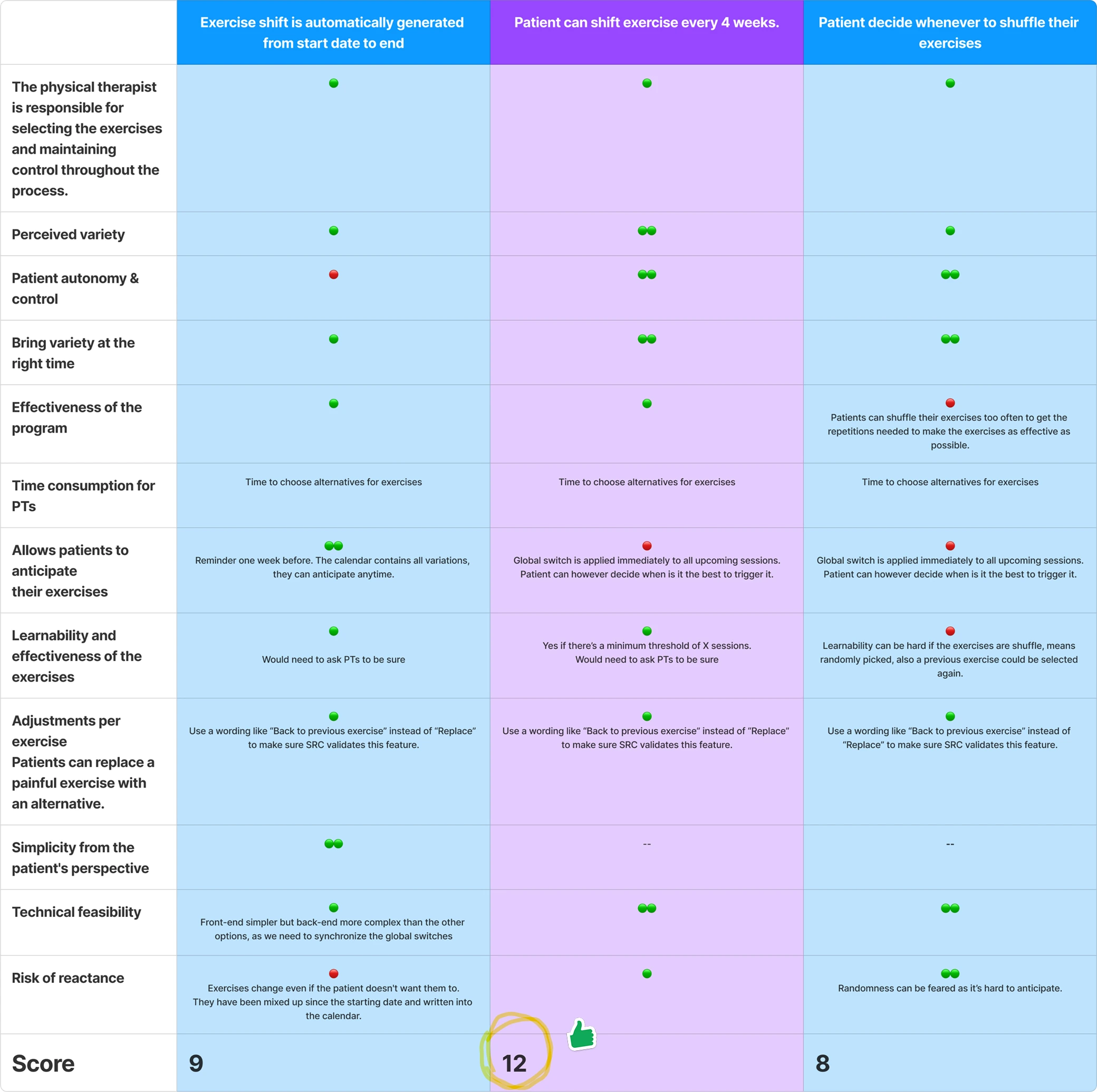
Diving into the details with user flows
Next, with the other Designer we led several user flow workshops with the development team to list then draw all user flows and edge cases, ensuring seamless integration of the new feature into our current system while minimising friction for therapists and patients.
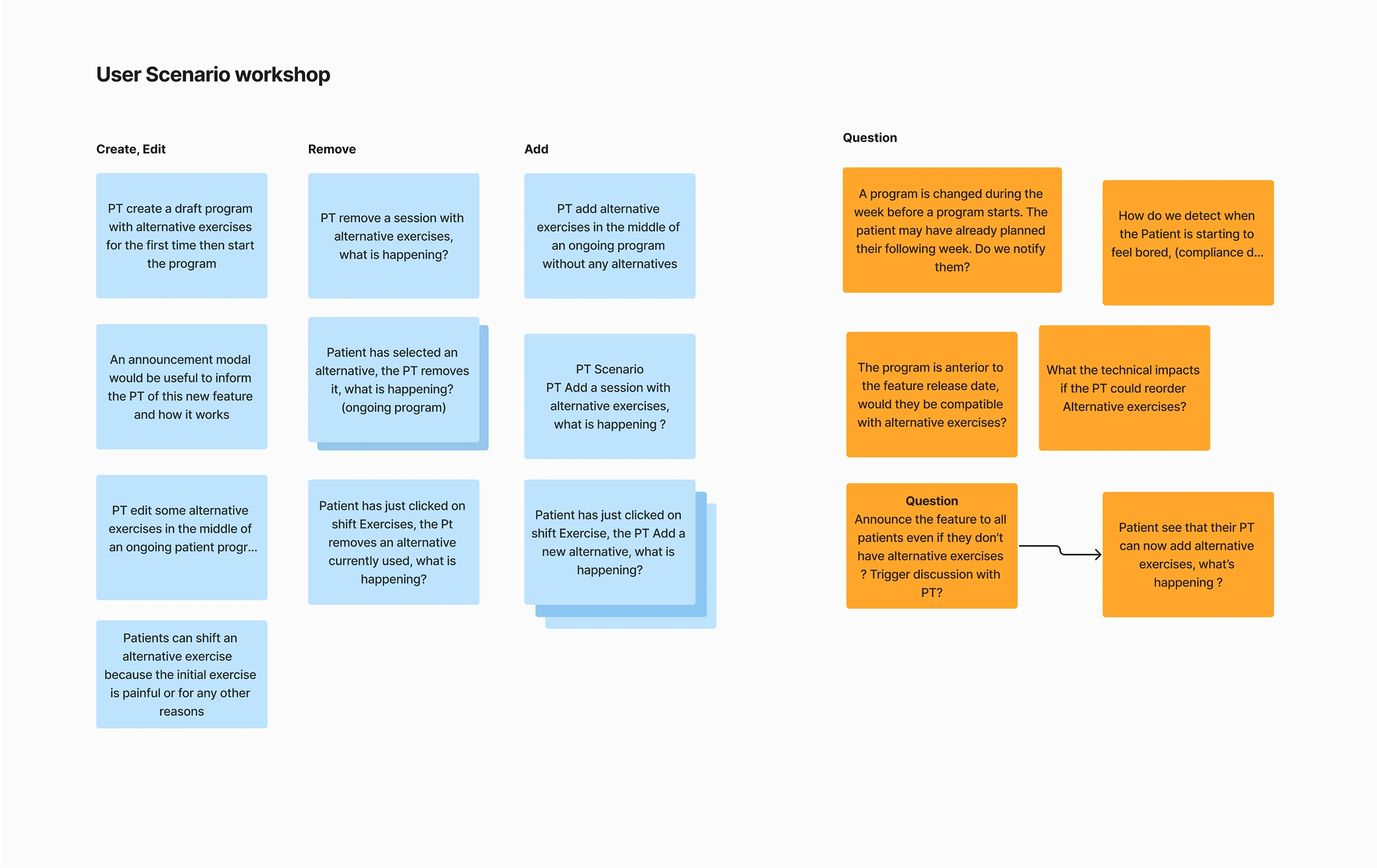
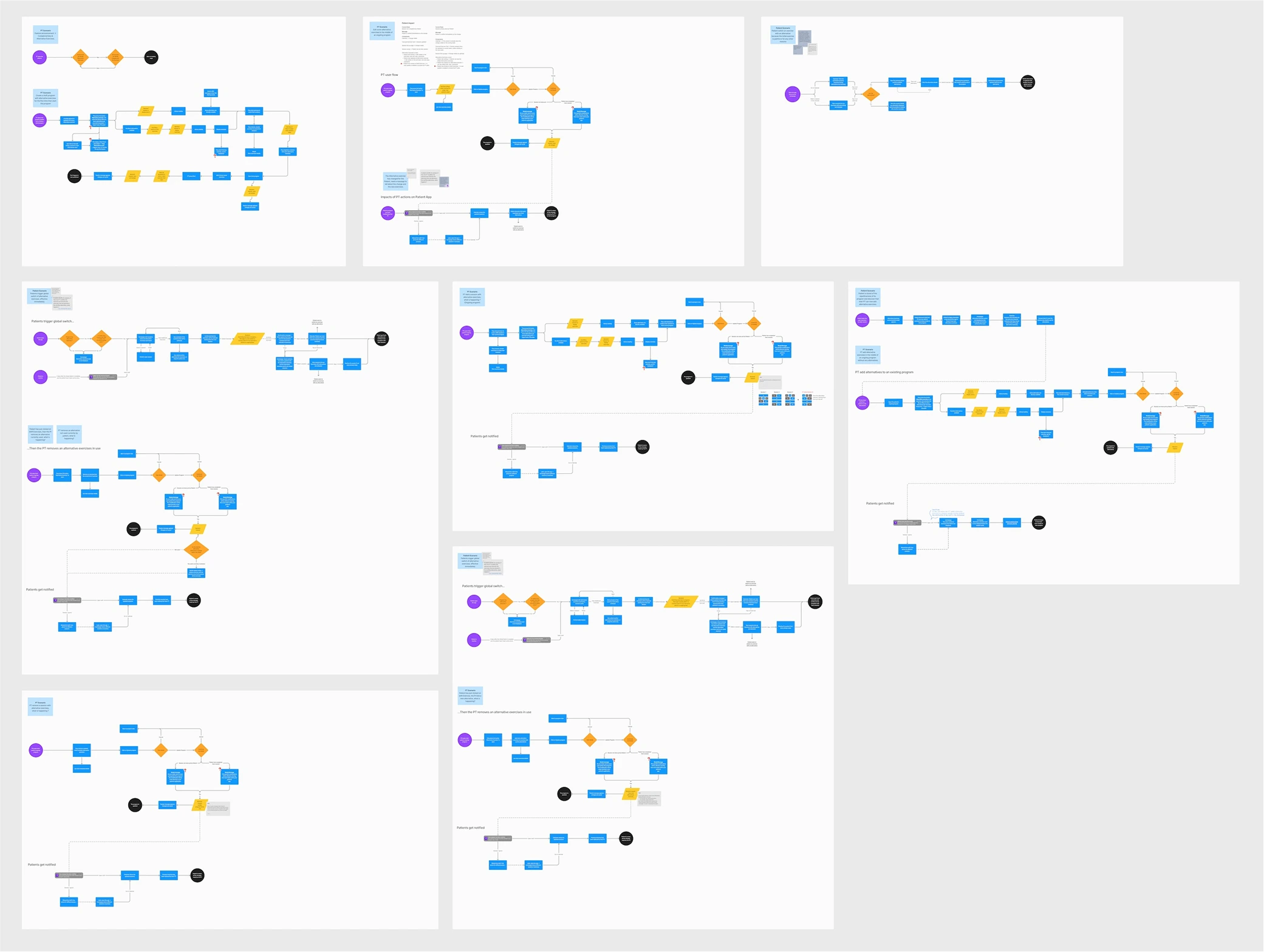
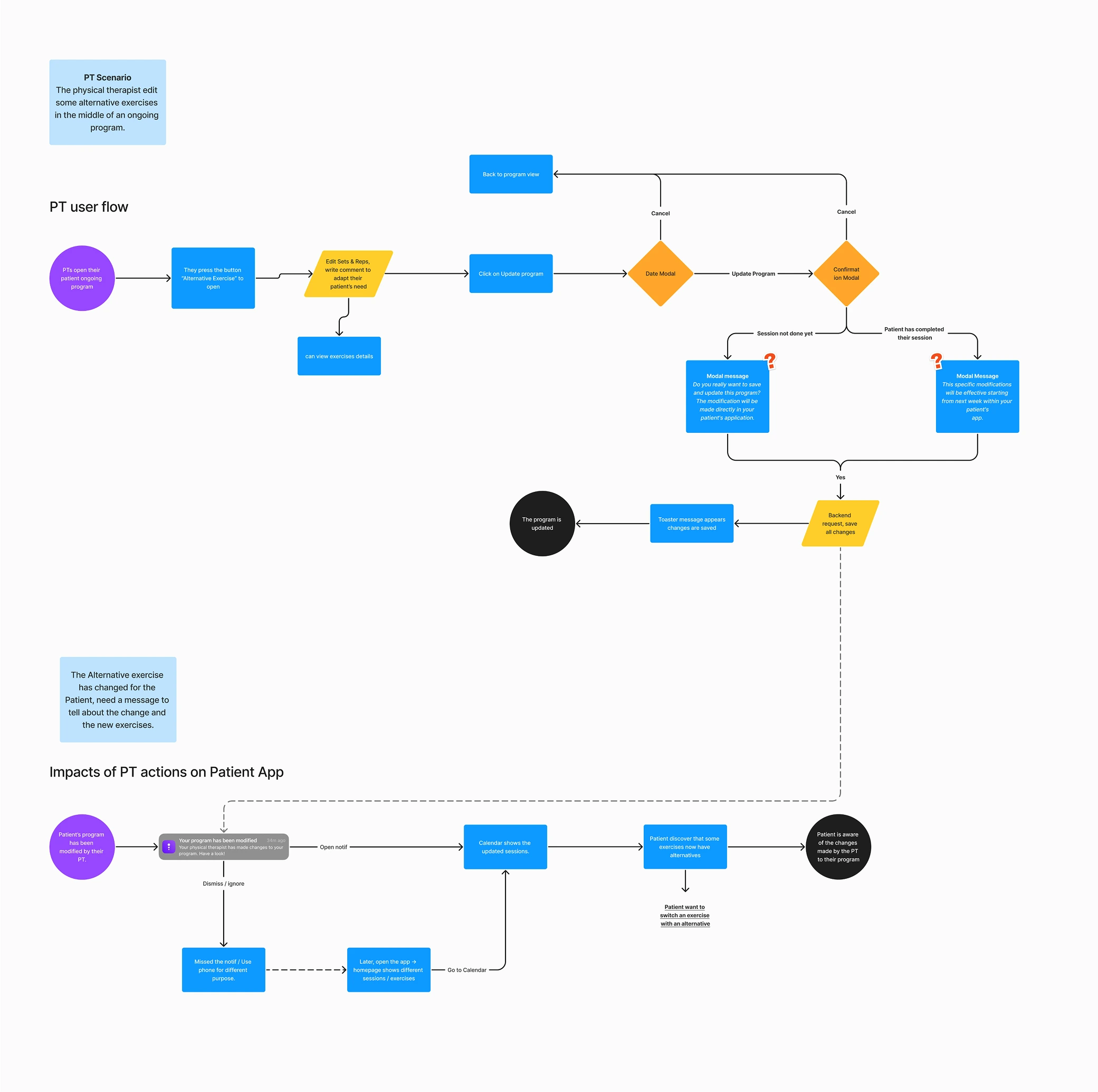
V. User Interface design
Final design, PT program builder
A PT adds an alternative exercise to an existing program with the simplest interaction.
Final design, Patient app
Patients can swap individual exercises or replace all exercises at once, giving them a boost of motivation and making their program more enjoyable.
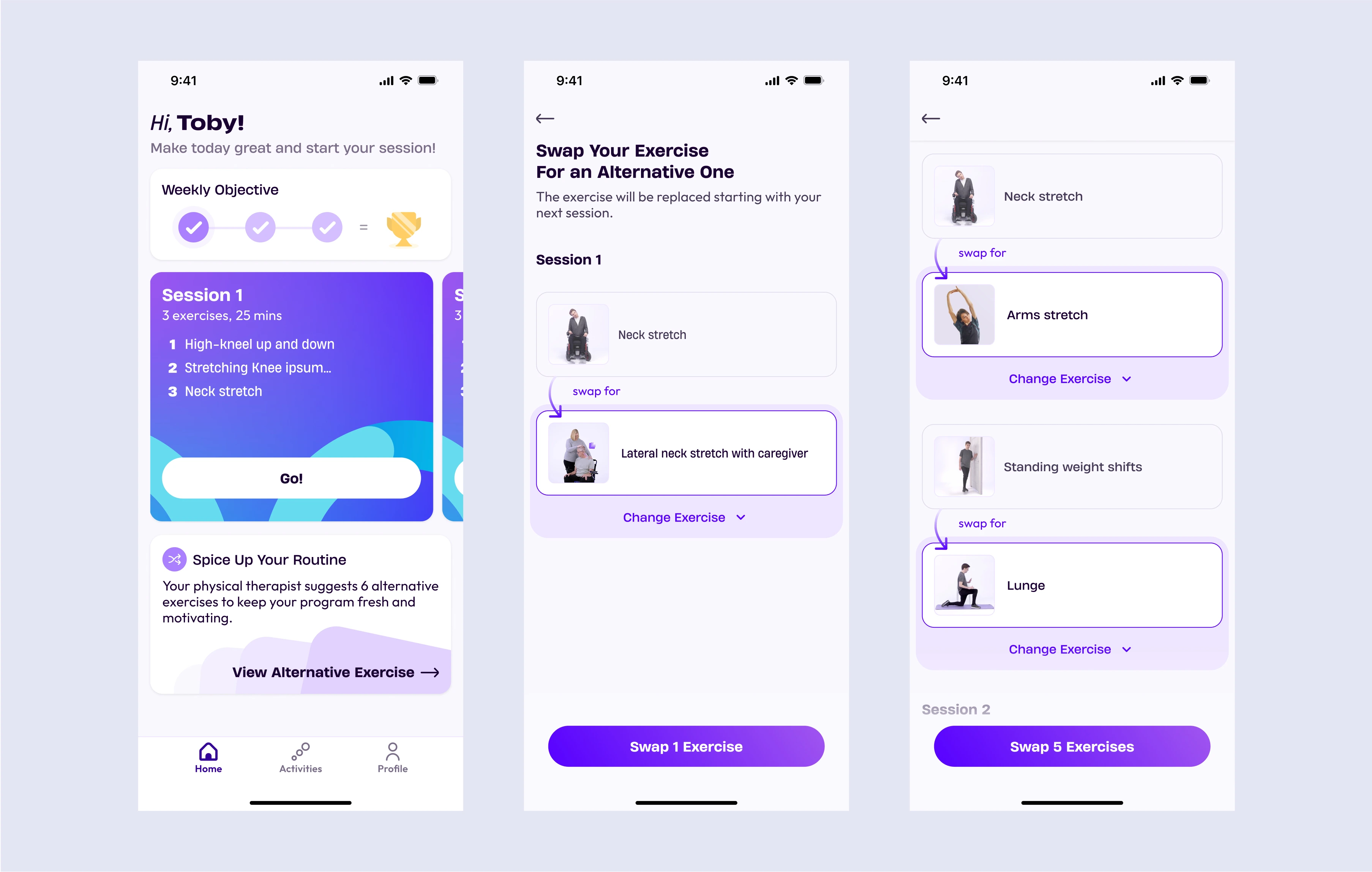
Prepare for production with design specs
I rigorously documented my UI design for both mobile and desktop, ensuring responsive layouts across devices. Additionally, I created motion interactions to make implementation easier for developers.
We dedicated time to reorganising our design system, resulting in well-documented modular components with clearly named states and precise usage guidelines.
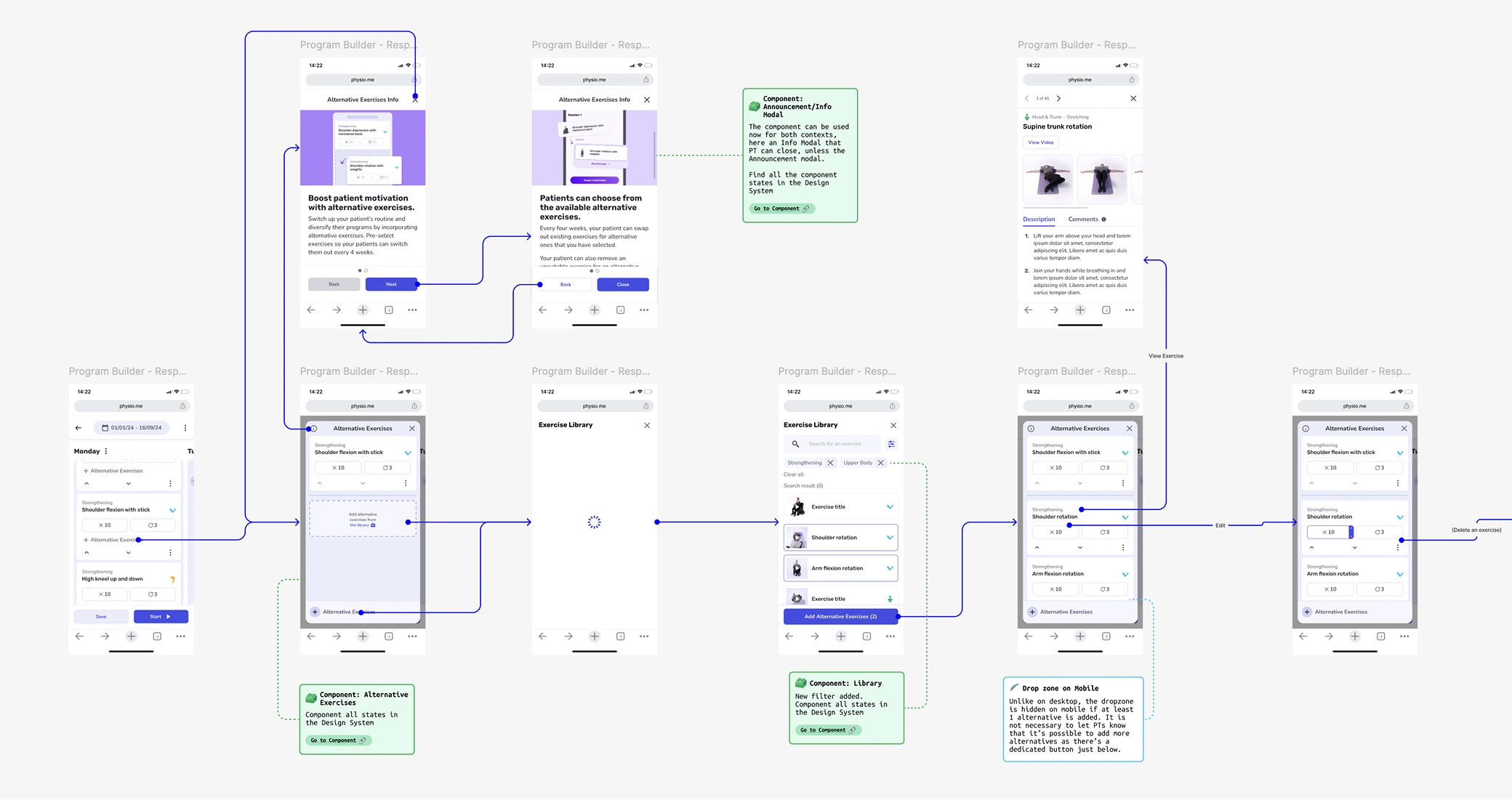
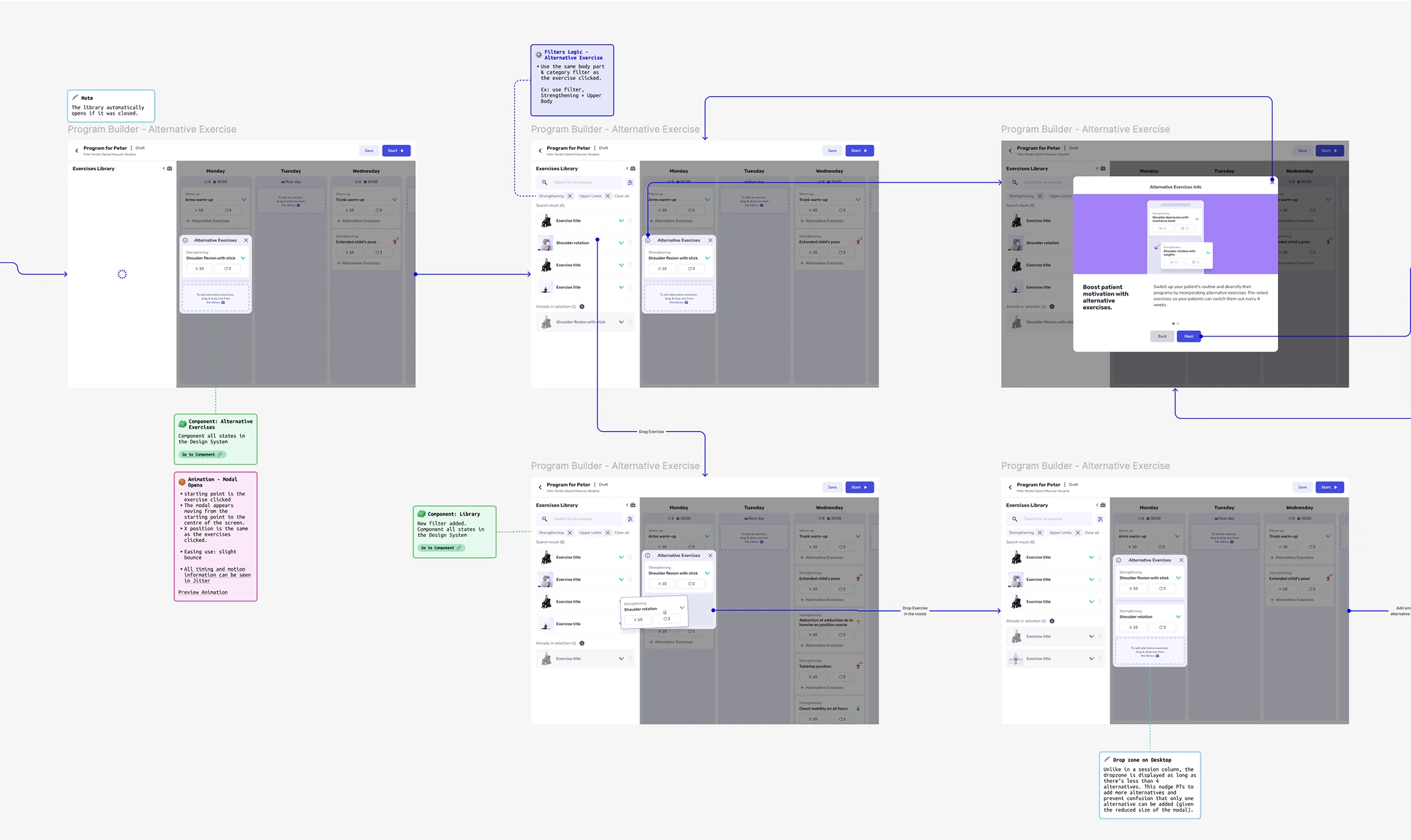
Last step, metrics definition
After finalising the UI design, I met with the Data team to determine the best metrics to measure the feature’s success according to our outcomes.
🚀 Outcomes
📐 Metrics
We want Physical Therapists to be more satisfied with Physio.me (NPS).
- Increase PTs NPS
We want PTs to create varied programs for patients so they feel more successful.
- % Increase in PTs retention
- % of active PTs who added Alternative Exercise to their program
We want Patients to feel less bored doing their program so they complete more exercises
- % Increase in Patient retention
- % Increase in Patient weekly exercise completion
Nearly eight months later, I contacted my former team to review their progress and discuss the project’s results.
VI. Impact
Physical Therapist
reflecting higher satisfaction among Physical Therapists with the service in 2024.
of active Physical Therapists added Alternative Exercises to their program.
Alternative Exercises in average per program.
Let’s comment on this:
- 10% of PT have used our feature, which is okay, but it could be better. This indicates that feature adoption needs improvement.
- An NPS of +7 shows a positive impact on the Business goal, reflecting the collective efforts behind the new features and improvements we’ve introduced on the PT side.
Unfortunately, I couldn’t access the patient and PT retention metrics.
Patients
of active Patients have selected an Alternative Exercise in their program.
in Patient Exercise weekly completion.
in Patient retention
Let’s review this:
- Only about ~8% of patients used the alternative exercise feature, which suggests it might not be visible enough or doesn’t fully meet expectations.
- Still, patient weekly exercise completion rose by 10% since launch, it means patients do more exercises per week , which is encouraging.
- Most importantly, patient retention improved by 22%, thanks to the features and improvements added over the past 18 months.
Reflection
Working with a full product team, from UX research to data, has made my work much more efficient. I have also improved my decision-making process using worst-case scenario planning and decision matrix, which help me handle design complexity within regulatory constraints and with limited user testing.
Physio.me faces slow adoption because it targets a narrow group of patients with neuromuscular disease (NMD), and only hospital-based physical therapists have the time to care for these patients.
One physical therapist said:
“I use it with all my patients; I don’t see why I would restrict myself if the exercises are relevant for everyone.”
In my opinion, taking a broader approach to neurological diseases could have facilitated better product adoption while still supporting Biogen’s objectives. Nevertheless, I remain optimistic: all our efforts have enhanced this service, some improvements are yet to go live, and I believe it will continue to drive patient engagement and therapist adoption in 2025.
A word about the Patients; people with neuromuscular diseases often depend on others in their daily lives. Their wish is simple: to gain independence and access Physio.me directly , without always needing to go through a healthcare professional.
This may appear risky. Yet we must remember that these patients know their bodies better than anyone else and are fully capable of performing certain exercises on their own. This could be another development area for Physio.me.
